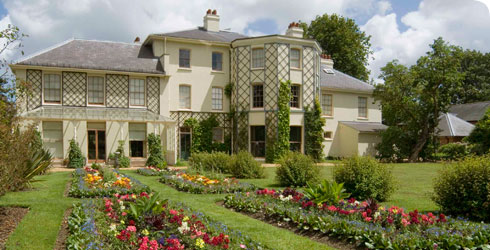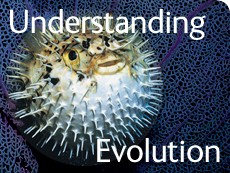Downe, Bromley, Kent
Darwin moved to Down House with his growing family in September 1842, and lived here for 40 years until he died in 1882.
Down House
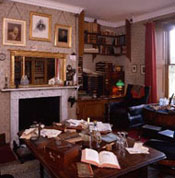
Darwin's study at Down House
Darwin bought the house, with 18 acres of land, from the vicar of Downe for just over 2000 pounds. Soon after they moved in, Charles and Emma began extending and renovating the house and gardens to create the home they wanted.
Down House is now owned by English Heritage and is open to the public.
Darwin's study
Darwin’s study at Down House remains much as it was when Darwin was alive. The writing desk and chair were used by Darwin as he developed his theory of evolution.
Gardens and greenhouses
The gardens and greenhouses have been restored and some of Darwin’s experiments on orchids, carnivorous plants and honeybees have been recreated.
Sandwalk
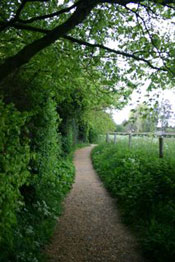
Darwin's thinking path at Down House © Karen James
Beyond the garden was a path around a small wood, that Darwin referred to as his ‘thinking path’ as he paced around it fives times every day at noon.
Emma Darwin, Charles’ wife was buried in Downe churchyard in 1896.
Proposed World Heritage Site
Down House and grounds, the neighbouring villages of Downe and Cudham, and the surrounding countryside are being proposed as a World Heritage Site. The countryside was Darwin’s open-air laboratory in which he studied a wide range of plants and animals as he developed his theory of evolution by natural selection.
Downe Bank
Darwin’s observations here of orchids and their insect pollinators gave him evidence of co-evolution and led to the publication of his famous book Fertilisation of Orchids in 1862.
Experts now agree that Downe Bank is indeed the species-rich setting that inspired Darwin’s conclusion of On the Origin of Species where he refers to an ‘entangled bank’.
High Elms
This large estate of about 370 acres of woodland and species-rich chalk grassland is now a Local Nature Reserve. The land once belonged to John Lubbock, the renowned biologist and politician, who Darwin encouraged as a boy to study the local wildlife. He helped Darwin illustrate his great barnacle work and later wrote a book on the social insects.
Keston
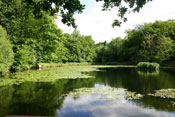
Keston ponds © I and J Palmer
Darwin used this area in his earthworm research, investigating their presence and absence in different parts of the heath.
Darwin also spent much time observing round-leaved sundew at Keston Bog. He noticed how insects became stuck to the leaves of sundew, which led him to investigate how it trapped and digested insects, pioneering work which led to the publication of Insectivorous Plants in 1875.
Keston Ponds were the most likely source of the mud from which Darwin germinated plants in a sequence of experiments into the geographical distribution of freshwater plants.
Toolbox

In World War II the Museum was used as a secret base to develop new gadgets for allied spies, including an exploding rat!
